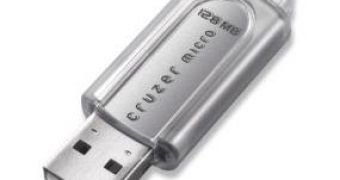Flash memories are solid state electronic devices with random access memory capabilities used for fast digital information storage. They are used in a wide range of applications, such as storing BIOS routines in typical digital computers, as medium capacity hard drives for digital cameras or as memory cards for laptop computers and video consoles.
The technology used to manufacture flash memories is based on EEPROM (electrically erasable programmable read-only memory) chips, which consist of memory banks formed of storing cells disposed in a grid of columns and rows. A basic storing cell has two MOS-FET transistors at each intersection, and are separated by an oxide layer. The two transistors are known as the floating gate and the control gate.
When the floating gate is connected to the row, the cell stores a '1' logic bit. The value changes to '0' logic through a process known as the Fowler-Nordheim tunneling, which alters the distribution of electrons inside the floating gate. When charge is applied to the floating gate from the column, it passes through the transistor and then drains to the ground, forming a negative charge build up on the other side of the oxide layer.
Once the electric charge forms, no other electrons can penetrate through the layer and on the other side due to electrostatic forces, thus establishing a charge distribution slightly higher than 50 percent between the floating gate and the control gate, which registers as '1' logic. However, when the charge distribution between the two transistors drops below 50 percent, then the cell is evaluated as storing a '0' logic bit.
In order to erase the flash memory and return the electron distribution inside it, a high-voltage charge is used to generate an electric field that resets all the cells to '1' logic. This can be done in certain blocks of the memory or the entire chip. Flash memories can retain information only as long as they are powered, however Flash RAM can maintain the information it is storing without requiring any supplemental power sources.
There are several types of Flash memories, each with different specifications regarding size and storage capacity, but they all share roughly the same properties. They are solid state devices, thus having no moving parts and therefore are noiseless, have fast access speeds and are relatively small in size. They consume low amounts of power while in use and can provide a storing capacity ranging between several kilobytes to a few tens of gigabytes.

 14 DAY TRIAL //
14 DAY TRIAL //